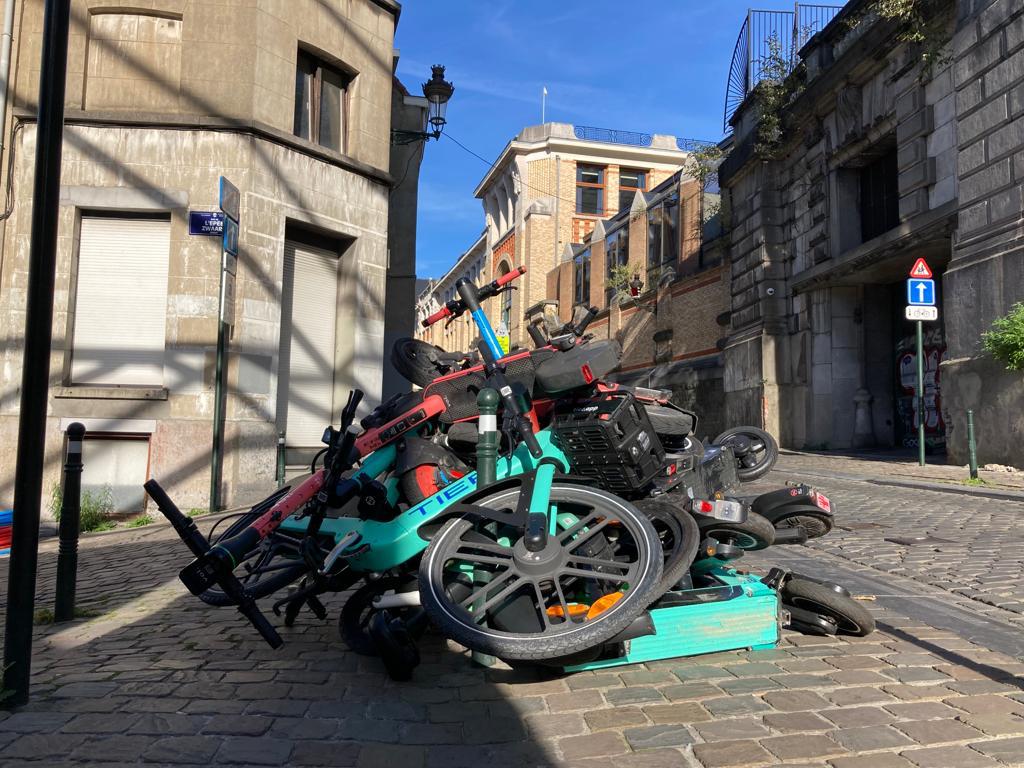The Brussels-Capital Region is gradually improving the nuisance caused by rogue e-scooters scattered across the city. Parking zones to this end will be created in the city centre in the coming weeks and months.
Shared e-scooters have long been hailed as a necessary extra when it comes to reducing car traffic in the capital, but they have caused a lot of inconvenience in recent years: pedestrians often feel unsafe on the roads and there has been a rise in accidents among users as well as haphazard parking blocking pavements.
While various municipalities such as Evere and Woluwe-Saint-Lambert made it mandatory for e-scooters to be parked in specific locations, establishing an overarching system of parking zones across the region was heavily delayed.
However, the Regional Government announced earlier this year that it would create more than 3,000 drop zones in the region and on the inner ring road – many of which were installed in the summer. Municipalities were also told that they could also create drop zones themselves, for which they would receive support from the region. Users will then only be able to end their ride if they leave their scooter in such a zone.
Keeping space accessible
The City of Brussels will start the process this week, Brussels Councillor for Mobility and Public Works Bart Dhondt said during the City Council on Monday evening.
"The scooters lying around, dumped in the most inconvenient places by their users, are an eyesore," Dhondt stated. "We are now addressing this by providing drop zones throughout the city of Brussels. This way, we keep the junk off the pavements and keep our public space accessible."
The roll-out of drop zones for shared e-scooters and electric bicycles will start this week in the Pentagon (located within the small ring road), where 250 drop zones will be activated this week. Then it will be the Laeken borough and European quarter.
Related News
- Rise in 'soft' mobility comes with clear rise in related accidents
- Etterbeek makes drop zones for electric scooters mandatory from next week
Finally, the other boroughs of the City of Brussels will also receive drop zones, such as Haren and Neder-over-Heembeek. In total, there will be around 450 drop zones but this will take several months.
From the start of next year, the Brussels-Capital Region will further tighten its grip on shared mobility vehicles by reducing the number of operators and the total number of vehicles that can be on its streets from 20,000 units to a maximum of 8,000 units.

